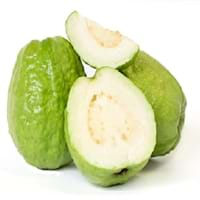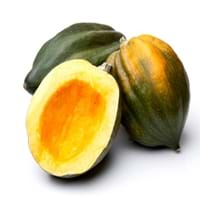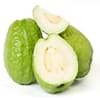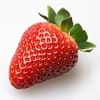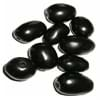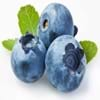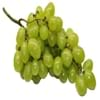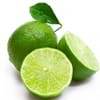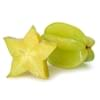पेरू आणि एकोर्न स्क्वॉश
फायदे
आरोग्यासाठी फायदे
कर्करोग प्रतिबंध, अतिसार उपचार, बद्धकोष्ठता प्रतिबंधित करते, स्करवी उपचार, आमांश वर उपचार
दाह कमी करण्याचे गुणधर्म, संधिवात उपचार, रक्तातील साखर नियंत्रित करते
सामान्य फायदे
रक्तदाब नियंत्रित करते, खोकल्यावर उपचार, डोळ्यांचि दृष्टी सुधारते, निरोगी कोलेस्ट्रॉल पातळी कायम राखते, सर्दीवर उपचार
रोगप्रतिकार प्रणाली चांगली करण्यास मदत करते, रक्तातील साखरेची पातळी नियंत्रित करते, पचनास मदत करते
त्वचेचे फायदे
वृद्धत्वाची गती कमी करते, त्वचेचा रंग निखारते, त्वचेची पाण्याची पातळी वाढवते, त्वचा रोग उपचार
त्वचेला पोषण देते, ताण पासून त्वचा संरक्षण
केसांचे फायदे
केस गळणे थांबवते
केस गळणे थांबवते, लांब आणि निरोगी केसांना प्रोत्साहन देते, केसांच्या वाढीवर नियंत्रण ठेवते
ऍलर्जी
ऍलर्जी लक्षणे
श्वास घेण्यात अडचण, खोकला, वाहणारे नाक, शिंका येणे, तोंड, जीभ किंवा ओठांना सूज येणे, घरघर लागणे
दमा, लाल पुरळ, तोंड, जीभ किंवा ओठांना सूज येणे
दुष्परिणाम
केस बारीक होणे, नखे बारीक होणे, त्वचेच्या समस्या, दात किडणे, अशक्तपणा, गर्भधारणेच्या दरम्यान शक्यतो असुरक्षित
अतिसार, उलट्या होणे
उपयुक्त आहे
गर्भवती महिला
Yes
Yes
स्तनदा महिला
Yes
Yes
खाण्याची सर्वोत्तम वेळ
उशिरा दुपारी एक नाश्ता म्हणून, रात्री आणि झोपायच्या आधी घेऊ नका, ताजी फळ खा, दुसरी फळ किंवा खाद्यपदार्थांसोबत खायचे टाळा, सकाळी (दुपारच्या जेवणाआधी)
जेवणासोबत, उशिरा दुपारी एक नाश्ता म्हणून, जेवण केल्यानंतर खाऊ नका, ताजी फळ खा, दुसरी फळ किंवा खाद्यपदार्थांसोबत खायचे टाळा
पोषण
प्रमाण
100 ग्रॅम
100 ग्रॅम
कर्बोदकं
14.30 ग्रॅम
30
10.40 ग्रॅम
99+
तंतू
5.40 ग्रॅम
8
1.50 ग्रॅम
31
साखर
8.90 ग्रॅम
30
0.00 ग्रॅम
99+
प्रथिने
2.50 ग्रॅम
5
0.80 ग्रॅम
37
प्रथिने आणि कर्बोदकांचे गुणोत्तर
0.18
9
0.08
19
जीवनसत्त्वे
अ जीवनसत्व (रेटिनॉल)
31.00 मैक्रोग्रॅम
16
245.10 मैक्रोग्रॅम
2
ब1 जीवनसत्व (थायामीन)
0.07 मिलिग्रॅम
13
0.10 मिलिग्रॅम
7
ब2 जीवनसत्व (रायबोफ्लेविन)
0.04 मिलिग्रॅम
23
0.00 मिलिग्रॅम
99+
ब3 जीवनसत्व (नायसिन)
1.08 मिलिग्रॅम
7
0.50 मिलिग्रॅम
30
ब5 जीवनसत्व (पँटोथिनिक ऍसिड)
0.45 मिलिग्रॅम
6
0.30 मिलिग्रॅम
12
ब6 जीवनसत्व (पायरिओडॉक्सिन)
0.11 मिलिग्रॅम
14
0.10 मिलिग्रॅम
15
ब9 जीवनसत्व (फॉलीक ऍसिड)
49.00 मैक्रोग्रॅम
3
11.00 मैक्रोग्रॅम
24
क जीवनसत्व (ऍस्कॉर्बिक ऍसिड)
228.30 मिलिग्रॅम
1
6.50 मिलिग्रॅम
99+
इ जीवनसत्व (टोकोफेरॉल)
0.73 मिलिग्रॅम
15
उपलब्ध नाही
के जीवनसत्व (फायलोचीनों)
2.60 मैक्रोग्रॅम
24
उपलब्ध नाही
लायकोपेन
5,204.00 मैक्रोग्रॅम
1
उपलब्ध नाही
ल्युटेन + झिआक्सानथीन
0.00 मैक्रोग्रॅम
36
उपलब्ध नाही
चोलीन
7.60 मिलिग्रॅम
13
उपलब्ध नाही
चरबी
0.95 ग्रॅम
7
0.10 ग्रॅम
99+
खनिजे
पोटॅशियम
417.00 मिलिग्रॅम
10
263.00 मिलिग्रॅम
25
लोह
0.26 मिलिग्रॅम
39
0.60 मिलिग्रॅम
21
सोडियम
2.00 मिलिग्रॅम
18
3.00 मिलिग्रॅम
17
कॅल्शियम
18.00 मिलिग्रॅम
23
26.00 मिलिग्रॅम
17
मॅग्नेशियम
22.00 मिलिग्रॅम
11
26.00 मिलिग्रॅम
8
जस्त
0.23 मिलिग्रॅम
12
0.10 मिलिग्रॅम
23
फॉस्फरस
40.00 मिलिग्रॅम
8
27.00 मिलिग्रॅम
19
मँगनीज
0.15 मिलिग्रॅम
21
0.10 मिलिग्रॅम
31
तांबे
0.23 मिलिग्रॅम
5
0.10 मिलिग्रॅम
22
सेलेनियम
0.60 मैक्रोग्रॅम
10
0.40 मैक्रोग्रॅम
13
चरबीयुक्त आम्ल
ओमेगा 3s
112.00 मिलिग्रॅम
6
22.00 मिलिग्रॅम
24
ओमेगा 6s
288.00 मिलिग्रॅम
5
13.00 मिलिग्रॅम
99+
स्टेरॉल
पाण्याचा अंश
80.80 ग्रॅम
99+
89.70 ग्रॅम
13
राख
1.40 ग्रॅम
5
0.80 ग्रॅम
13
कॅलरीज
प्रमाण
100 ग्रॅम
100 ग्रॅम
सोललेल्या फळांमधील उष्मांक
68.00 किलोकॅलरी
15
40.00 किलोकॅलरी
31
न सोललेल्या फळांमधील उष्मांक
उपलब्ध नाही
उपलब्ध नाही
गोठलेल्या फळांमधील उष्मांक
उपलब्ध नाही
39.00 किलोकॅलरी
23
वाळलेल्या फळांमधील उष्मांक
325.00 किलोकॅलरी
13
56.00 किलोकॅलरी
40
कॅन केलेल्या फळांमधील उष्मांक
57.00 किलोकॅलरी
19
40.00 किलोकॅलरी
22
अन्नामध्ये उष्मांक
रसामध्ये उष्मांक
55.00 किलोकॅलरी
25
47.00 किलोकॅलरी
31
जॅममध्ये उष्मांक
240.00 किलोकॅलरी
21
200.00 किलोकॅलरी
26
पाई मध्ये उष्मांक
340.00 किलोकॅलरी
11
200.00 किलोकॅलरी
99+
वैशिष्ट्ये
प्रकार
झाडाचे फळ, उष्णदेशीय
बोरासारखे बी असलेले लहान फळ
हंगाम
बारामही
हिवाळा
जाती
लखनौ 49, अलाहाबाद पांढरा, चित्तीदार, हरिझा, ऍपल पेरू, हफशी, आरका मृिदुला आणि अलाहाबाद सुरखा
बुश टेबल राणी,उत्सव संकरित, काळे लाकुड
बिनबियांच्या विविधता
No
No
रंग
हिरवा, गुलाबी, पिवळा
गडद हिरवा, हिरवा-पिवळा, नारंगी हिरवा
आतील रंग
पांढरा
पिवळा
आकार
गोल
गोल
घडण
खुशखुशीत
तंतुमय
चव
गोड-आंबट
काहीसा गोड
उत्पत्तिस्थान
मध्य अमेरिका, मेक्सिको, दक्षिण अमेरिका
मध्य अमेरिका, उत्तर अमेरीका, अज्ञात
वाढ
झाडे
वेली
लागवड
मातीचा प्रकार
चिकणमाती, खडकाळ, वालुकामय
पाण्याचा निचरा होणारी
मातीत pH
4.5-7
5.8-6.8
हवामान
भरपूर सूर्यप्रकाश असणारा
थंड, भरपूर सूर्यप्रकाश असणारा
तथ्ये
बद्दल तथ्य
- पेरू एक आंबट-गोड फळ आहे. याची झाडे विषुववृत्तीय व उष्ण हवामान असलेल्या भागात वाढतात.
- पेरू अनेक पक्ष्यांचेही खाद्य आहे.
- खूप वर्षांपूर्वी पोर्तुगिजांनी दक्षिण अमेरिकेतून हे फळ भारतात आणले.
उपलब्ध नाही
मद्यार्क पेयं मध्ये
मद्य
Yes
No
बिअर
Yes
Yes
स्पिरिट
Yes
Yes
कॉकटेल
Yes
Yes
उत्पादन
अव्वल निर्माते
भारत
चीन
अन्य देश
चीन, इंडोनेशिया, मेक्सिको, नायजेरिया, पाकिस्तान, फिलीपिन्स, थायलंड
इजिप्त, भारत, इराण, इटली, मेक्सिको, रशिया, तुर्की, युक्रेन, युनायटेड स्टेट्स ऑफ अमेरिका
अव्वल आयातकर्ता
कॅनडा
कोस्टा रिका
अव्वल निर्यातदार
भारत
युनायटेड स्टेट्स ऑफ अमेरिका
वैज्ञानिक नाव
वनस्पति नांव
पसिडीम गुज़व
चुकर्बिता पेपो
प्रतिशब्द
उपलब्ध नाही
हिवाळी फळांपासून तयार केलेले पेय
वर्गीकरण
डोमेन
युकार्या
युकार्या
राज्य
प्लान्टी
प्लान्टी
उपराज्य
त्रचीओबियोण्ता
त्रचीओबियोण्ता
विभागणी
मॅग्नोलिलोफायटा
मॅग्नोलिलोफायटा
वर्ग
मॅग्नोलिओप्सिडा
मॅग्नोलिओप्सिडा
उपवर्ग
रोसीडे
डिलेन्हिडे
क्रम
मिर्तेल्स
कुकूरबीटेल्स
कुटुंब
मुर्तसी
कुकुर्बितासी
पोटजात
पसिडीअंम
कुकूरबिटा
प्रजाती
प्सिडियम गुआजावा
पेपो
सर्वसामान्य गट
मीरटल
उपलब्ध नाही
|
||
|
||
|
